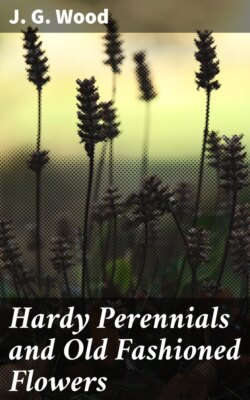Читать книгу Hardy Perennials and Old Fashioned Flowers - J. G. Wood - Страница 27
На сайте Литреса книга снята с продажи.
ОглавлениеFig. 11. Anemone Sulphurea. (One-fourth natural size.)
This is a grandly beautiful Windflower from Central Europe. The names, combined with the illustration (Fig. 11), must fail to give the reader a proper idea of its beauty; the specific name in reference to the colour falls far short, and cannot give a hint of its handsome form and numerous finely-coloured stamens; and the drawing can in no way illustrate the hues and shell-like substance of the sepals; there is also a softness and graceful habit about the foliage, that the name, apiifolia (parsley-leaved), does not much help the reader to realise. It may be parsley-like foliage in the comparative sense and in relation to that of other Anemones, but otherwise it can hardly be said to be like parsley. It is said by some to be only a variety of A. alpina; if so, it is not only a distinct but an unvarying form, so much so that by others it is held to be a species; the line of difference in many respects seems so far removed, even granting it to be a variety (as in hundreds of similar cases), as to warrant a specific title. It may be more interesting to state that it is a lovely and showy flower, and that the shortest cut to an enjoyment of its beauties is to grow it.
The flowers are 2in. to 2½in. across when expanded, but usually they are cup-shaped. The six sepals are egg-shaped but pointed, of much substance, and covered with a silky down on the outside, causing them to have changeable hues according to the play of wind and light. The stamens are very numerous, the anthers being closely arranged and of a rich golden colour; the flower stems grow from 9in. to 18in. high, being terminated by one flower; it carries a large and handsome involucre of three leaves, a little higher than the middle of the stem, and just overtopping the radical leaves, umbrella fashion; the leaves of the involucre are like those of the root, but stalkless. The radical leaves are stalked, well thrown out, drooping, and over 1ft. long, ternate and villous; the leaflets are pinnatifid and deeply toothed.
This desirable plant is of the easiest culture, thriving in common garden soil, but it prefers that of a rich vegetable character and a situation not over dry. The flowers are persistent under any conditions, and they are further preserved when grown under a little shade, but it should only be a little.
For propagation see A. decapetala.
Flowering period, May and June.
There are two other allied kinds which not only much resemble this, but which flower at or near the same time—viz., A. alpina and A. decapetala, which see.
